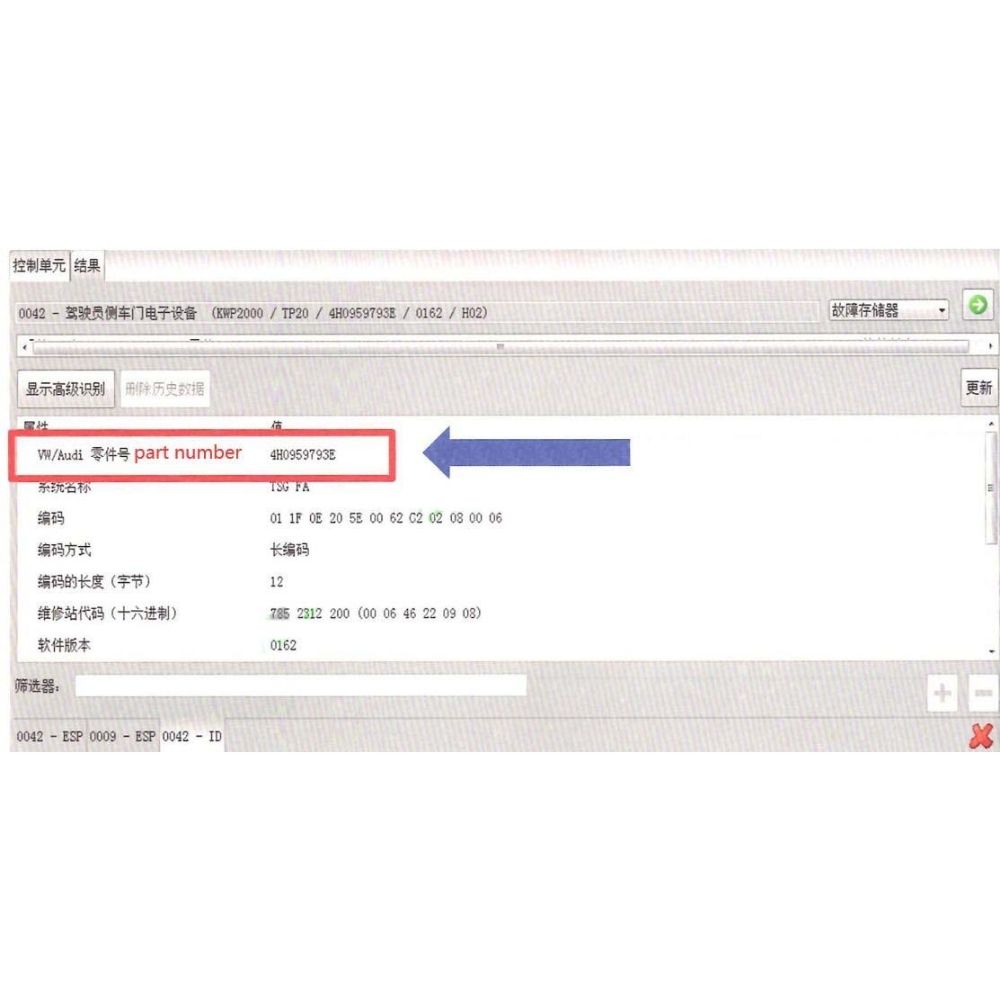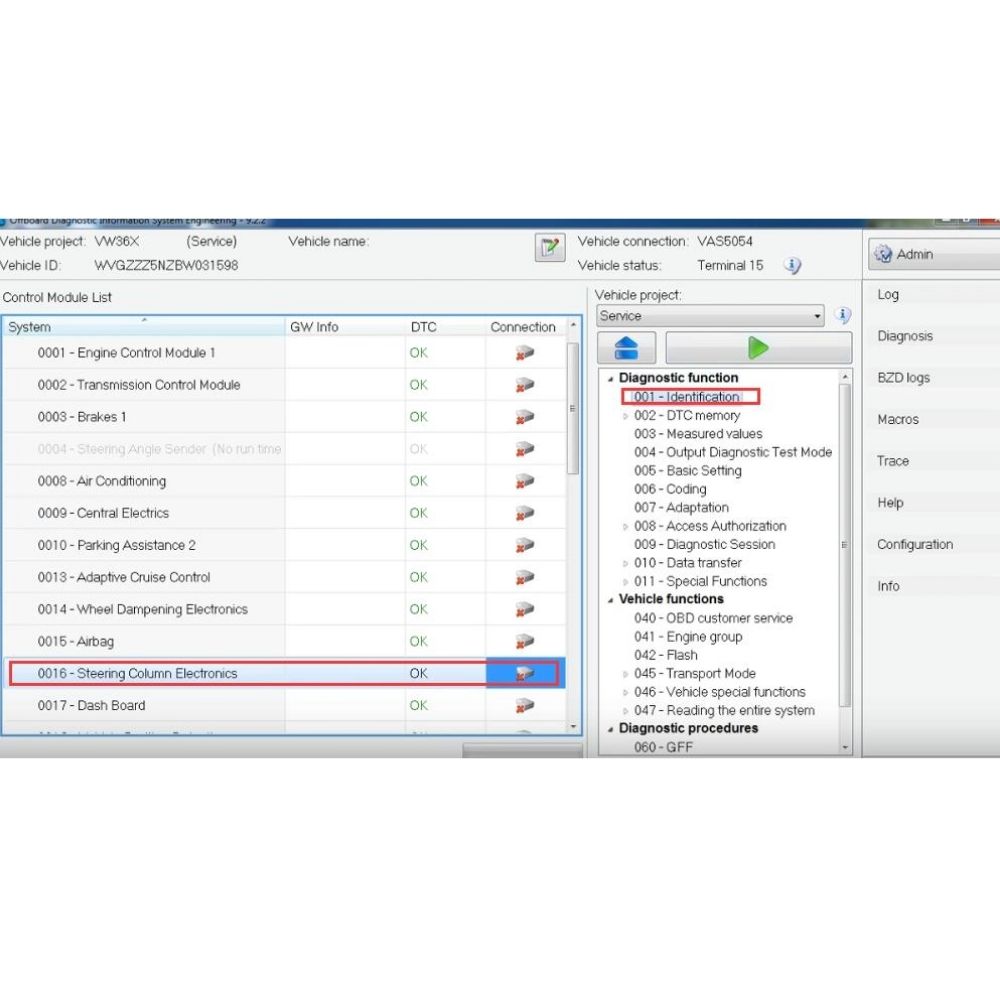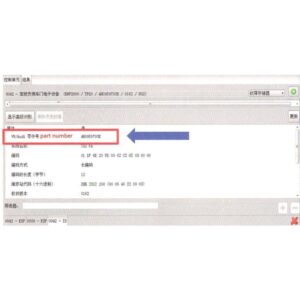

The P0116 Audi error code appears when the Engine Control Unit (ECU) detects an abnormal reading from the Engine Coolant Temperature Sensor (ECT). This sensor plays a crucial role in monitoring coolant temperature, helping the ECU adjust fuel injection, ignition timing, and overall engine performance. When the signal from the sensor deviates from expected values, the ECU logs the P0116 code and triggers the Check Engine light.
Table of Contents
ToggleThe P0116 diagnostic trouble code (DTC) specifically relates to your Audi’s Engine Coolant Temperature (ECT) Sensor. When your Audi’s sophisticated Engine Control Unit (ECU) detects an unusual or inconsistent signal from this vital sensor, it flags the P0116 error. The ECT sensor plays an indispensable role in your engine’s operation. It diligently monitors the temperature of the engine coolant, providing crucial data that the ECU uses to fine-tune a variety of engine functions. These adjustments include optimizing fuel injection for efficient combustion, precisely setting ignition timing for smooth power delivery, and managing overall engine performance to ensure your Audi runs at its best.
Think of the ECT sensor as a key communicator within your Audi’s engine management system. It constantly relays temperature information, allowing the ECU to make real-time decisions that impact fuel efficiency, emissions, and engine longevity. When the signal from the ECT sensor falls outside the expected range or behaves erratically, the ECU recognizes this anomaly. As a result, it logs the P0116 code in its memory and illuminates the Check Engine Light on your dashboard. This light serves as an alert, indicating that there’s a potential issue that needs attention to prevent further complications and ensure your Audi continues to operate reliably. Addressing this promptly can help maintain optimal engine operation and prevent potential drivability problems.
Several factors can trigger the P0116 code in your Audi. Identifying the root cause is the first crucial step in effectively resolving the issue. Let’s explore the common culprits:
Faulty Coolant Temperature Sensor (ECT): This is often the primary suspect. Over time, the ECT sensor itself can degrade, leading to inaccurate readings. It might be providing data that is either consistently wrong, intermittent, or completely absent. The sensor could be worn out due to age and exposure to extreme temperatures, internally damaged, or simply malfunctioning electronically. A misreading sensor sends incorrect information to the ECU, prompting the P0116 code.
Damaged Wiring or Connector: The electrical connection between the ECT sensor and the ECU is just as critical as the sensor itself. Any damage to the wiring, such as corrosion, breaks, or shorts, can disrupt the flow of the signal. Corroded terminals within the connector can create resistance, leading to inaccurate voltage readings. Broken or frayed wires can cause intermittent or complete signal loss. A short circuit can send erroneous signals to the ECU. Thoroughly inspecting the wiring harness and the sensor connector is essential to rule out these issues.
Cooling System Issues: Problems within the cooling system itself can indirectly cause the P0116 code by leading to actual abnormal coolant temperatures. A thermostat that is stuck open will prevent the engine from reaching its optimal operating temperature, while a thermostat stuck closed can cause overheating. Coolant leaks, whether from hoses, the radiator, or the water pump, can result in low coolant levels and affect the sensor’s readings. Air pockets in the cooling system can also interfere with accurate temperature sensing. These mechanical issues can lead to temperature readings that fall outside the expected parameters, triggering the P0116 error.
ECU Malfunction: Although less common, a fault within the ECU itself can sometimes be the cause of the P0116 code. This could involve a software glitch or a hardware issue within the ECU that leads to misinterpretation of the sensor signal. Diagnosing an ECU malfunction typically requires advanced diagnostic tools and expertise.
When the P0116 code is active, you might observe several symptoms in your Audi’s performance:
Check Engine Light Illumination: This is the most immediate and obvious sign. The Check Engine Light on your dashboard will illuminate to alert you to a potential problem.
Inaccurate Temperature Gauge Readings: The temperature gauge on your instrument cluster might display readings that seem unusually low, unusually high, or fluctuate erratically. It might not accurately reflect the actual engine coolant temperature.
Poor Engine Performance, Especially When Cold: The ECU uses the coolant temperature data to adjust fuel enrichment during cold starts. If the sensor is providing incorrect information, your engine might experience difficulty starting, rough idling, hesitation upon acceleration, or a lack of power, particularly when it’s cold.
Increased Fuel Consumption: Inaccurate coolant temperature readings can cause the ECU to deliver an incorrect fuel-air mixture. If the ECU mistakenly believes the engine is colder than it actually is, it might inject more fuel than necessary, leading to decreased fuel efficiency.
Cooling Fan Behaving Abnormally: The ECU also uses coolant temperature data to control the operation of the engine cooling fan. If the sensor readings are incorrect, the cooling fan might run continuously even when the engine is cold, or it might fail to engage when the engine is overheating.
Tools
Software
Step 1: Diagnose the Error Using an OBD-II Scanner
Locate the OBD-II diagnostic port in your Audi. This is typically found under the dashboard on the driver’s side.
Connect your OBD-II scanner to the diagnostic port.
Turn the ignition key to the “ON” position without starting the engine.
Power on your OBD-II scanner and navigate to the “Read Codes” or similar function.
Note down the P0116 error code and any other related codes that might be present.
Access the “Live Data” or “Sensor Readings” section of your scanner.
Look for the Engine Coolant Temperature sensor data.
Observe the sensor readings when the engine is cold. The temperature should roughly match the ambient temperature.
Start the engine and monitor the coolant temperature readings as the engine warms up. The temperature should gradually increase to the normal operating range.
Note any inconsistencies, such as a sensor that doesn’t show any change, jumps erratically, or provides implausible readings.
Step 2: Inspect the Coolant Temperature Sensor (ECT)
Identify the location of the ECT sensor. It is commonly found near the thermostat housing or on the engine block where coolant passages are located. Consult your Audi’s repair manual for the exact location specific to your model.
Once located, visually inspect the sensor for any signs of physical damage, such as cracks or leaks.
Carefully examine the electrical connector attached to the sensor. Check for corrosion on the terminals or any signs of damage to the connector housing.
Disconnect the electrical connector from the ECT sensor.
Use a multimeter set to the resistance (Ohms) setting.
Measure the resistance across the terminals of the ECT sensor.
Refer to your Audi’s repair manual for the expected resistance values at different temperatures. Generally, the resistance of a thermistor-type ECT sensor will be higher when the temperature is low and lower when the temperature is high.
Compare your measured resistance values with the specifications in the repair manual. If the readings are significantly inconsistent or outside the specified range, the sensor is likely faulty and needs replacement.
Step 3: Check Wiring and Connectors
Visually trace the wiring harness connected to the ECT sensor, looking for any frayed, broken, or exposed wires. Pay close attention to areas where the wiring might be routed near hot engine components or moving parts.
Ensure the electrical connector is clean and securely attached to the sensor. Use electrical contact cleaner to clean the terminals of both the sensor and the connector if you notice any corrosion.
Use your multimeter set to the continuity testing mode (often indicated by a diode symbol or an audible beep).
Test for continuity between the terminals of the disconnected sensor connector and the corresponding pins on the ECU connector. You will need your Audi’s wiring diagram to identify the correct pins.
If there is no continuity, there is a break in the wiring that needs to be located and repaired.
Also, check for short circuits by testing for continuity between each of the sensor connector terminals and a good ground point on the vehicle chassis. There should be no continuity. If there is, it indicates a short to ground.
Repair any damaged wires by splicing and insulating them properly. Replace the connector if it is damaged or heavily corroded.
Step 4: Inspect the Cooling System
With the engine cool, check the coolant level in the coolant reservoir. Refill if it is below the minimum mark.
Thoroughly inspect all coolant hoses for leaks, bulges, or cracks. Check the hose clamps to ensure they are tight.
Examine the radiator for any signs of leaks or damage.
Inspect the water pump area for any coolant leaks.
To test the thermostat, start the engine from cold and allow it to run. Monitor the upper radiator hose. It should remain relatively cool until the engine reaches its normal operating temperature, at which point the thermostat should open, and the hose should become hot.
If the upper radiator hose gets hot very quickly after starting the engine (indicating the thermostat is stuck open) or if it doesn’t get hot even after the engine has been running for a while and the temperature gauge is high (indicating the thermostat is stuck closed), the thermostat needs to be replaced.
Step 5: ECU Diagnosis and Reprogramming
If the P0116 code persists after replacing the ECT sensor and addressing any wiring or cooling system issues, the problem might lie with the ECU.
Using ODIS Service software to perform a thorough diagnostic scan of the ECU for any other related error codes or abnormalities.
Check if there are any software updates available for your Audi’s ECU. Outdated software can sometimes lead to incorrect sensor interpretations. If updates are available, follow the proper procedures using ODIS or a trusted independent specialist with the necessary tools to perform the update.
If you suspect a hardware failure within the ECU, it is best to consult a qualified professional or an Audi dealership for further diagnosis and repair or replacement of the ECU. ECU repairs can be complex and often require specialized equipment.
Step 6: Clear Error Codes and Recheck
Once you have addressed the suspected cause of the P0116 code, connect your OBD-II scanner again.
Navigate to the “Clear Codes” or “Erase Codes” function and clear the P0116 error code from the ECU’s memory.
Turn off the ignition and then restart the engine.
Monitor the temperature gauge to ensure it is functioning correctly.
Use your OBD-II scanner to check for any new or recurring error codes.
If the P0116 code does not return and the symptoms have been resolved, the repair was successful.
The P0116 code on Audi vehicles is typically related to issues with the Engine Coolant Temperature Sensor, its wiring, or the cooling system. By systematically diagnosing and repairing the affected components, you can restore proper engine function and prevent long-term damage.
If you need professional assistance with diagnostics, coding, or programming, AutoExplain is here to help. Contact us via WhatsApp at +1(936)2896695 for expert support on Audi and other vehicle brands!








At AutoExplain, we provide automotive online repair service, auto repair tips, car repair manuals & document & training course to help mechanics of all experience levels—fix vehicles efficiently
AUTO EXPLAIN LLC
Employer Identification Number (EIN):
38-4349958
Whatsapp Us: +1(936)2896695
Gmail: [email protected]
Our Workshop: 1500 N Grant ST Sten Denver, Colorado, United States
Copyright 2025 © AutoExplain